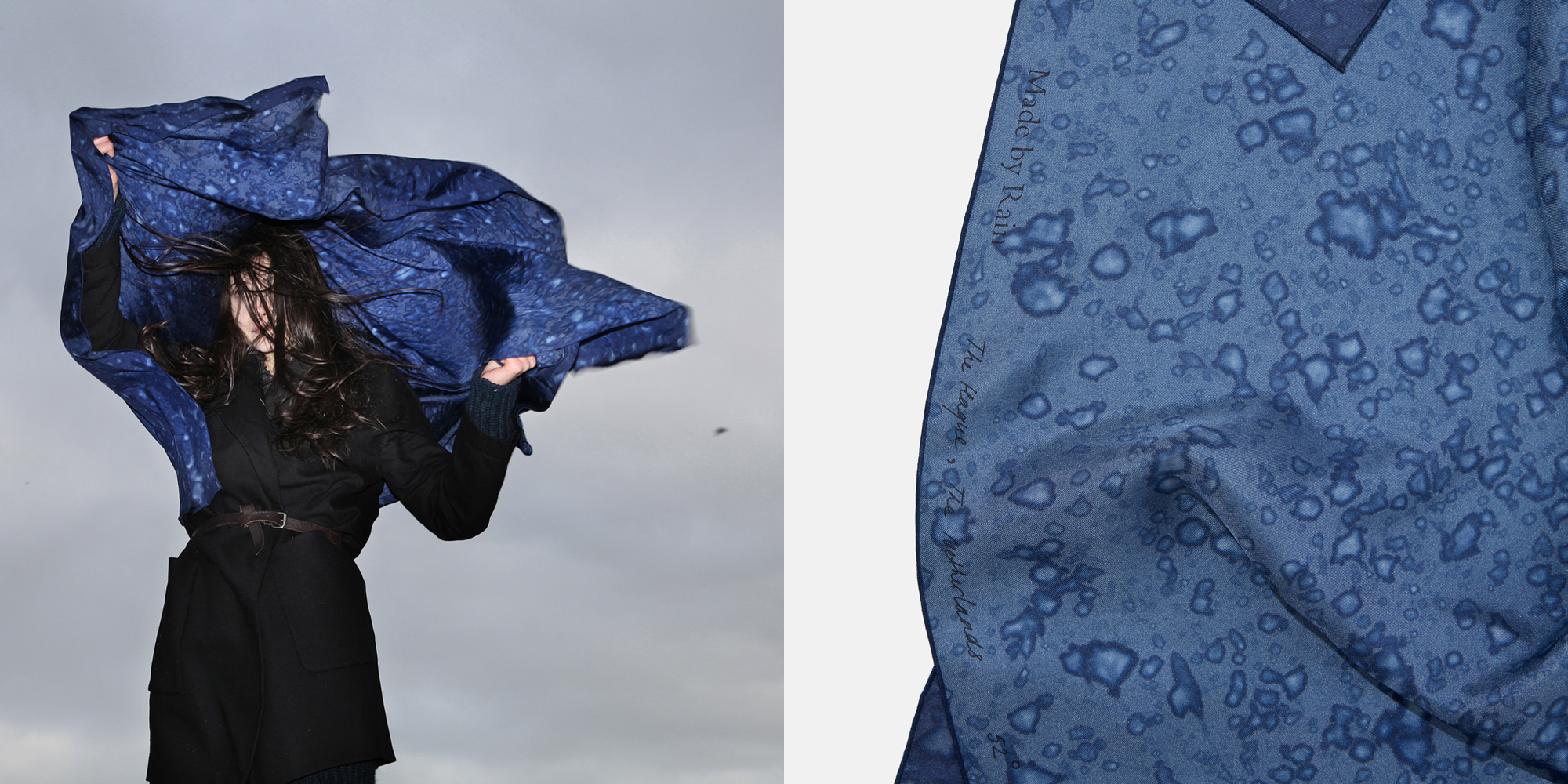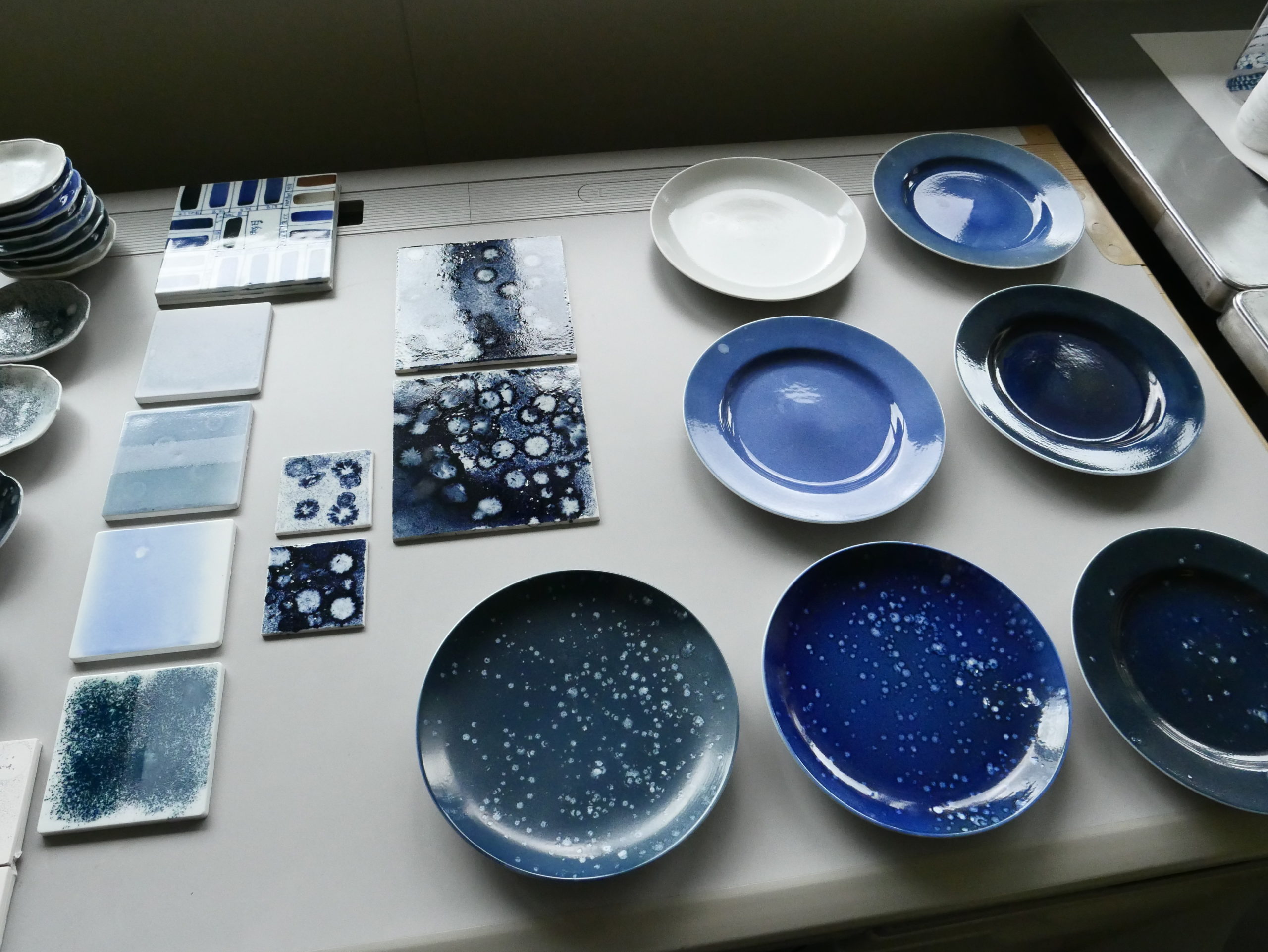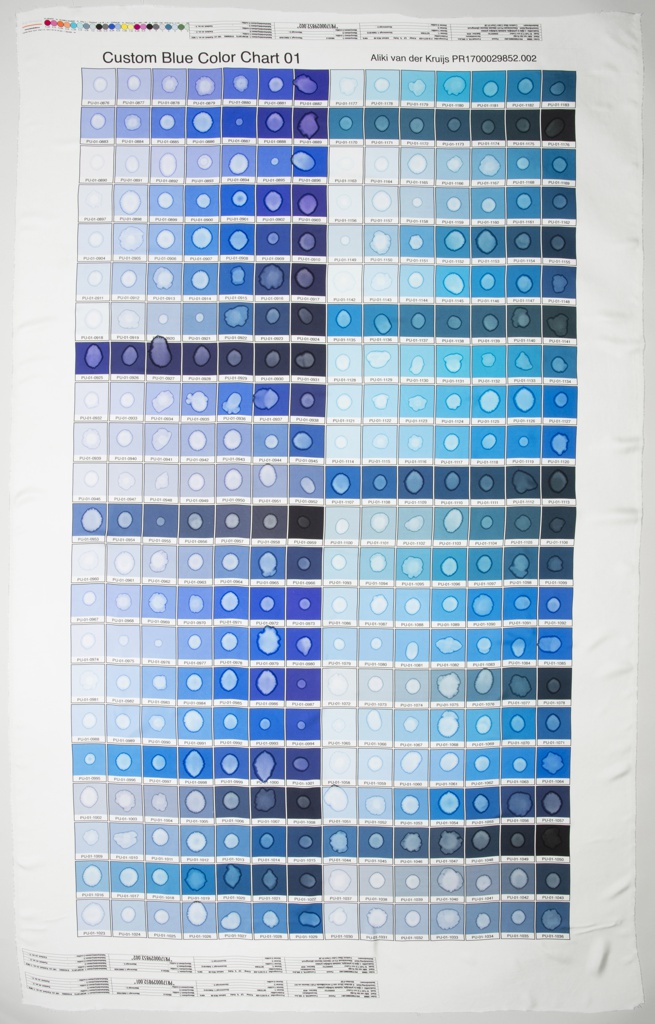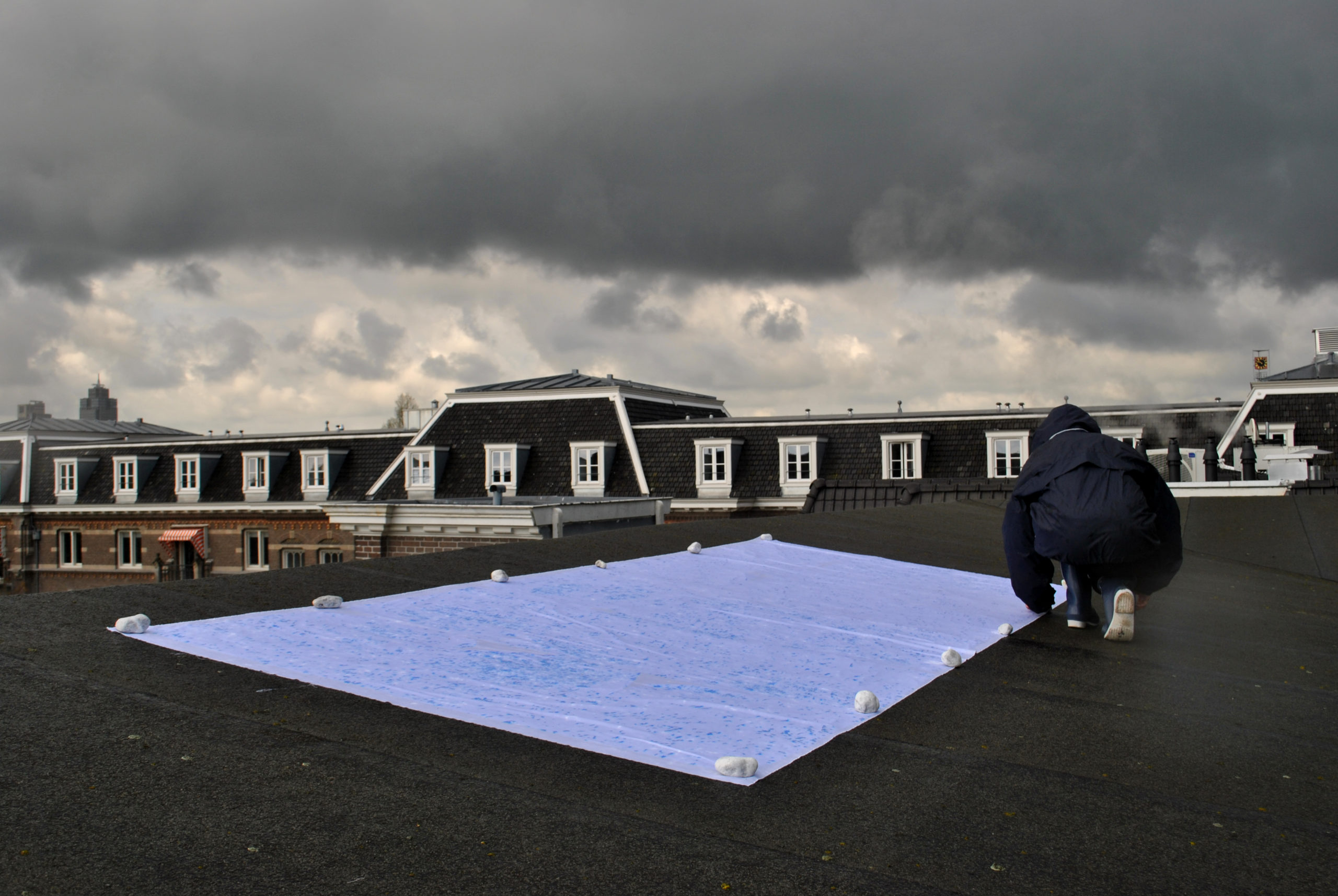Aliki van der Kruijs is a Dutch designer who invented “pluviagraphy,” a technique with which she records the falling of raindrops on textiles and porcelain as part of an ongoing project titled Made by Rain.
Made by Rain recently entered the permanent collection of Cooper Hewitt, following its inclusion in the exhibition Nature—Cooper Hewitt Design Triennial (2019-2020).
In this Q&A, van der Kruijs discusses her inspiration and design process.
What is one of your strongest memories of rain?
My strongest memory with rain is one of my earliest memories. I grew up in Nigeria, and when I was very small, I was running with my father from the carport into the monsoon rain to the street and back. I can remember being totally soaked, and that father asked me, Again? And I said yes, so we ran to the street again.
How did you develop your pluviagraphy technique?
I asked myself, How can you wear the weather? (It layers a philosophical and a practical question.) And I wanted to “catch” the rain visually, on material that is close to the body.

Made by Rain. Courtesy Aliki van der Kruijs.
First, I experimented with tissue paper and textiles, whereby two layers of material came together on top of each other and patterns formed. Because these patterns could not be properly fixed for washing and lightfastness, I started looking further.
In the TextielLab of TextielMuseum Tilburg, I developed a fabric in which the ink and the cloth are one. This makes the process simpler, and I can fix the fabrics, making them truly portable.
What inspired you to expand Made by Rain to ceramics? Do you have plans to explore more mediums with Made by Rain?
In Japan, there are more than fifty ways to describe rain. Therefore, there is a different notion of rainfall. I found that ceramics used to be a medium to transmit stories in ancient Japan, often displaying a landscape or a special event. I was curious how Made by Rain would turn out on a three-dimensional shape.

Test samples for Made by Rain. Courtesy Aliki van der Kruijs.
If I were to bring Made by Rain to another medium, it would be architecture. It would be great to explore the field of architecture with this idea, and for that I see not so much one fixed “image” of rain, but an element that can interact with the weather.
What three adjectives define “Good Design” to you? Is there a word in Dutch you might use that doesn’t translate to English?
Simple, intelligent, playful.

In preparation for creating textile patterns using rainfall, Aliki van der Kruijs created this sample blanket that explores how digital printing inks respond to water before they are fixed with heat. This textile, created in 2016, is found in the permanent collection of Cooper Hewitt.
In a reply to a question as to whether I am a designer or artist, I once replied that I like the new definition of design when adding the hyphen-minus: de-sign. I think design is very strong when a process, situation of material is de-signed, giving it a new meaning without necessarily adding or making.
